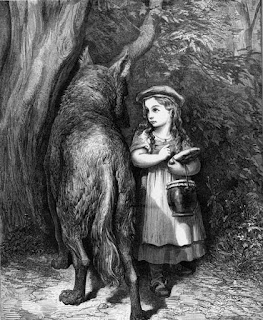Poetry; Feminism: Day 3
Let's complete the video on gender stratification from last class...
- Gender Stratification: Crash Course #32
- Theories of Gender: #33
- Structural Functionalism: human behavior helps keep society running...
- Social Conflict Theory: gender is a social construct that affords power to some and disadvantage or marginalization to others...
- Symbolic interactionism: language and symbol influence behavior...
- Intersectionality: the interplay of class, race, gender, orientation, etc. that often results in disadvantage or marginalization
- Use this information and what you think about the ideas found therein to write a creative piece of your own.
Poetry ex.:
- Anne Sexton's poems,
- "The Operation" & others
- "Snow White" & "Rapunzel"
- "Women" by Louise Bogan
- Write your own feminist poem
- Pick a subject that focuses on an important topic for women in our society/culture and write about that (see models & examples...)
- Rewrite and retell a fairy tale from a feminist perspective. See below...
Brainstorm your favorite fairy tales. Which fairy tales were your favorite (or are your favorite)? Why do you like this/these stories?
The Archetypal Fairy Tale
• Stories, often told to children, to entertain, instruct or teach
• Often used to illustrate the problems that children and young people face as they become adults
--What might be some of these typical problems?
--What might be some of these typical problems?
• The characters in fairy tales represent part of our own “psyche” or inner self; they also tend to support traditional values of a society in regards to gender...
Common themes in fairy tales include:
• Metamorphosis• Transformation• Imprisonment• Love• Good versus evil (overcoming obstacles)• Death or transition• Illusion or misunderstanding• Rules or authority
There are often boy and girl fairy tales. These differ in plot.
• Boy fairy tale plots focus on exploration, discovery, and include a climax which separates the boy from his childhood. Usually by the end, the boy has grown into a man.Example: Revolting Rhymes, episode #1 from Roald Dahl. Use Gender & Feminist criticism to discuss the short film.
• Girl fairy tale plots focus on discovery as well, but also abduction, outside threats, powers beyond their control, and falling in love. Usually by the end, the girl has grown into a woman.
Fairy Tale Characters
• Often good, innocent, or sometimes foolish.
• Often instructed by an older person or character (sometimes a mystical creature)
• Often fairy tale characters have to face great odds
• Often fairy tale characters are given an item(s) that allows them to discover who they are
Fairy tale form:
• Usually written in 3rd person point of view with an omniscient narrator
• Usually begins with “Once upon a time…” and ends “happily ever after.”
• Usually include the rule of 3 (the first two times a character tries something, it usually doesn’t work)
Sample fairy tale sites online:
German: The Brother's Grimm (bio) & a compilation of their folktales.
Danish: Hans Christian Andersen
French: Charles Perrault
Sample fairy tale sites online:
German: The Brother's Grimm (bio) & a compilation of their folktales.
Danish: Hans Christian Andersen
French: Charles Perrault
- Choose a fairy tale that you want to work with (consider your favorites--or be unique and consider one that is not as well known)
- Write a narrative or prose poem or a story or scene or an essay in which you explore gender and fairy tale themes.
Period 2:
The Stone Gods, Part One:
This new world weighs a yatto-gram
The Stone Gods is written in four parts; The first part begins on Orbus, a world very like earth, and like earth running out of resources and suffering from the severe effects of climate change. This is a world where everyone is bio-enhanced and bored to death. It is a world that has run out of possibilities. Then, a new planet is discovered, perfect for human life. This planet, Planet Blue, has only one drawback – the dinosaurs. A mission leaves Orbus to get rid of the dinosaurs. Tragedy ensues.
- Find lines or sections to inspire you and your own writing.
- Read the book (particularly if you haven't started reading yet).
- Write.
HOMEWORK: Complete Part 1 of The Stone Gods. Begin reading Part 2. Allusions: Robinson Crusoe: (Here's the entire text); and John Donne's poem The Sun Rising.


Comments